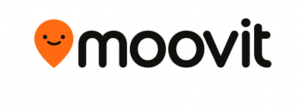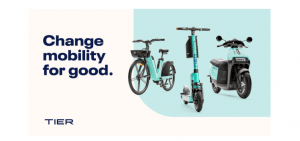Flashback to 5 months ago, I would have never expected to come out of GTL with so many new experiences and stories to tell. I came with little expectations of what the semester would look like and would have never expected to become such a train fanatic and almost full time traveler every week. Besides the gorgeous mountain views, quaint little towns, and amazing foods across Europe, there are so many other things I’ve taken for granted at GTL. Without these people, I really wouldn’t have had the time of my life in Europe. So as a final goodbye to this blog post and to my time at GTL, here’s a thank you letter to everyone who’s made my journey thus far the best it could have ever been.
To my travel buddies and new friends,
I can’t believe 5 months of traveling with you all has passed by so fast. Regardless of where we were or how bad our train journey was or how sleep-deprived and hungry we were from trying to get back to Metz before classes started, it’s been such a fun time. I’ve not only seen so many things with you all, but I’ve also learned so much about your lives and interests in general. Most notably, thanks to Deni for taking me all the way to Bulgaria and showing me your culture. Thanks to Neel for being my personal map and travel consultant. You’re indeed more reliable than any SNCF website or Eurail time table ever could be. Thanks to those who survived the Augsmatthorn hike with me in Switzerland. That’s a ride I will never forget for sure and I’m still confused how we made it out of there that night. Thanks to the Spain/Portugal group for eating great seafood together and having a blast sea kayaking and mountain biking. Long live “Spain/Portugal!” You guys have been such a fun group to travel with and I hope we have more crazy adventures again sometime. And finally, thanks to Sam for being my ultimate travel buddy. I’m so glad I got to explore, eat, and try random new things with you so much over the past months and that’s been the greatest blessing this entire semester. To everyone else who has made my GTL journey an unforgettable one, I can never thank you enough. Love you all 🙂
To the GTL professors, staff, and admin,
Thank you so much for providing and running such an amazing and exploratory program. The professors here have been so accommodating and caring about our well-being and physical health. With around the clock GTL urgent support, consulting, and nursing staff, GTL has been equipped to meet all my needs. Here, people will actually sit down and listen to your needs, whatever it may be. It can be arranging a shuttle to and back from Cora or going to the hospital for being sick. Sending out notifications for travel surveys and mental health resources every week has been comforting for me to know that someone is watching out for us if something happens. You will never be alone at GTL if you’re struggling, that’s for sure. Special thanks to everyone for keeping the student body happy and healthy. Without you all, GTL would not have been the way it is today.
To Dev and the BDE student community,
Thanks for organizing so many fun community bonding events throughout the semester. I’ve been able to talk to and meet so many new people through the ice skating, bowling, and ping pong tournament events. It’s been such a blast. BDE has been really active in bringing GTL together as a community, which was a big change up from the beginning of the semester when COVID restrictions were tight.
And finally to those running the GTL Blog and Instagram,
Throughout the semester, you’ve been able to bring my story and those of others to life by posting them to social media. Not only will this hopefully provide a glimpse of reality at GTL, it will also encourage prospective students to expand their horizons and spend a semester thriving in Europe.
Thanks for everything, GTL. It’s been a great run.
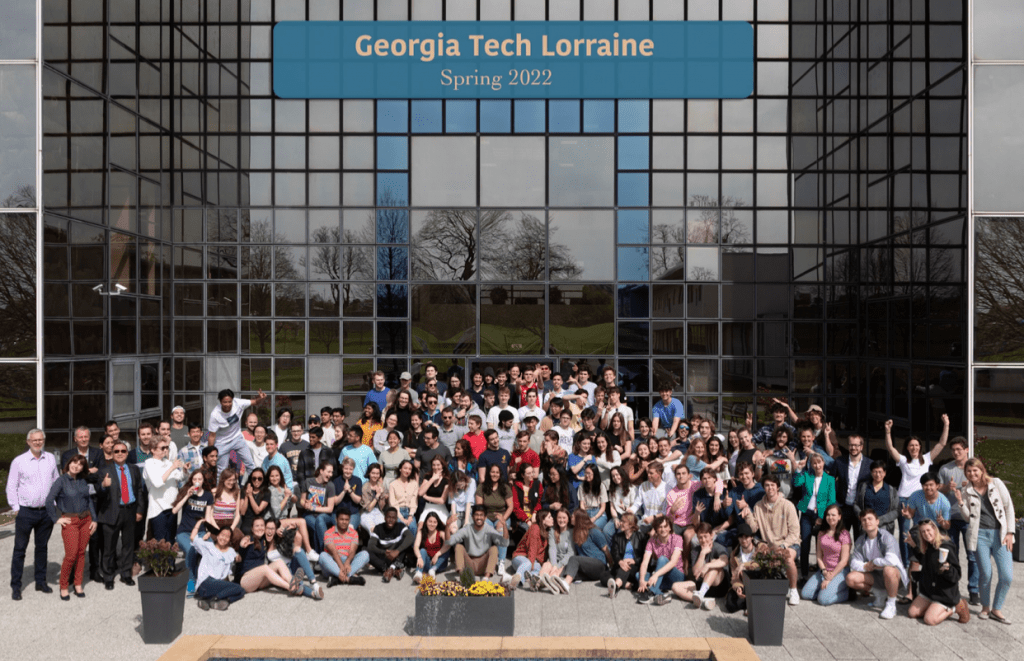
Signing off,
Claire Lin

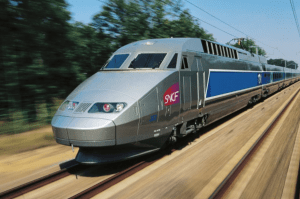
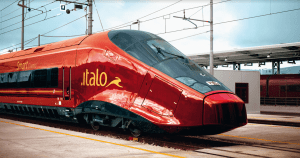
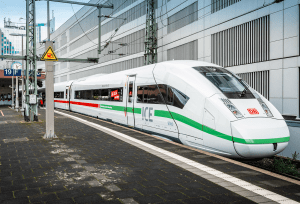
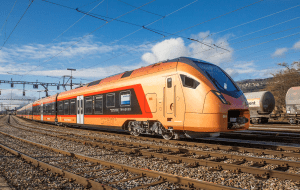
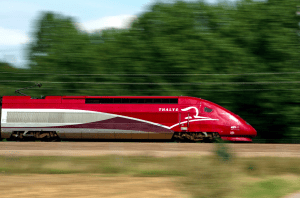
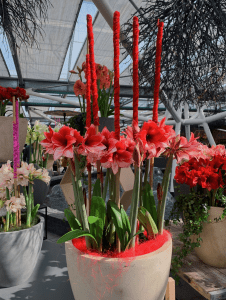 Warmth. As the sun began to filter through the trees, the first signs of Spring emerged as tiny flower buds nestled within the greening grass and started peeking out from the crackly tree branches. In Metz and across Europe, a myriad of colors began to paint the cold, bleak canvas left by winter.
Warmth. As the sun began to filter through the trees, the first signs of Spring emerged as tiny flower buds nestled within the greening grass and started peeking out from the crackly tree branches. In Metz and across Europe, a myriad of colors began to paint the cold, bleak canvas left by winter. 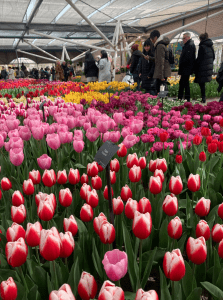
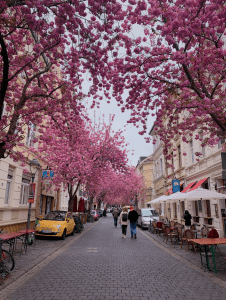 This glorious stretch of cherry blossom was just a random find when we visited Bonn, Germany.
This glorious stretch of cherry blossom was just a random find when we visited Bonn, Germany. 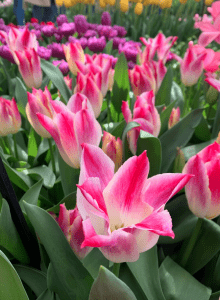
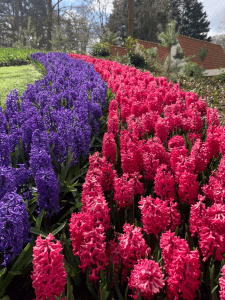
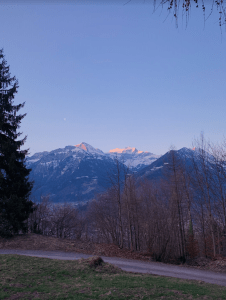 At first, our journey was smooth, we were able to catch a glimpse of the beautiful sunrise as it shimmered across the lake and reflected off the snow-covered mountains across from us. Preparation wise: we really loaded up on food. With 3L of water for each of us, a dozen or so ham sandwiches, 12 granola bars, a pack of Biscoff, 2 fruit squeezies, and a pack of Dutch Nutella cookies, we were set. However, in terms of gear, only one of us had hiking sticks and the rest of us managed to get around using regular school backpacks, tennis shoes, and our overall balance. That was where we made a grave mistake.
At first, our journey was smooth, we were able to catch a glimpse of the beautiful sunrise as it shimmered across the lake and reflected off the snow-covered mountains across from us. Preparation wise: we really loaded up on food. With 3L of water for each of us, a dozen or so ham sandwiches, 12 granola bars, a pack of Biscoff, 2 fruit squeezies, and a pack of Dutch Nutella cookies, we were set. However, in terms of gear, only one of us had hiking sticks and the rest of us managed to get around using regular school backpacks, tennis shoes, and our overall balance. That was where we made a grave mistake. 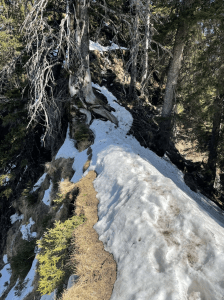 The trails became narrower and the ridge even steeper, with two sharp drops on both sides. We were ill-prepared to take on the trail any longer. When we were almost about the clear the trees, several experienced hikers had turned back, warning us that the ridgeline would be too snowy to continue, but we were determined to check out the scene for ourselves. Long story short- we turned back. The sharp drop was covered in packed, melting snow, the most dangerous combination. With our lack of equipment and expertise, we had to give up the hike. It was just too early in the year to reach Augstmatthorn.
The trails became narrower and the ridge even steeper, with two sharp drops on both sides. We were ill-prepared to take on the trail any longer. When we were almost about the clear the trees, several experienced hikers had turned back, warning us that the ridgeline would be too snowy to continue, but we were determined to check out the scene for ourselves. Long story short- we turned back. The sharp drop was covered in packed, melting snow, the most dangerous combination. With our lack of equipment and expertise, we had to give up the hike. It was just too early in the year to reach Augstmatthorn.  Slowly inching our way down, we were able to scoot slowly over the grass, with one of two terrifying moments when we would lose control over patches of slippery grass, grabbing desperately onto the weeds for some stability. In the end, after 40 miserable minutes of sliding, slipping, and sprawling on the ground to slow our descent, we made it to a flatter ledge on the side. Just getting to the ledge was difficult enough, spreading into a sea star and grabbing the small tree saplings to pull us over to safety. Finally, we had made it. Miraculously, just several meters away was flat ground that looked relatively clear of snow and mud. The trail. Somehow, we had made it to the same trail just further down the mountain, saving us a hundred meters or so of downhill hiking. From there, we hustled down the mountain, almost running as we heard strange animal sounds and breaking branches coming from deep within the forest. After another hour, we collapsed onto the pavement, relieved, exhausted, and elated to be one step closer to home… sike.
Slowly inching our way down, we were able to scoot slowly over the grass, with one of two terrifying moments when we would lose control over patches of slippery grass, grabbing desperately onto the weeds for some stability. In the end, after 40 miserable minutes of sliding, slipping, and sprawling on the ground to slow our descent, we made it to a flatter ledge on the side. Just getting to the ledge was difficult enough, spreading into a sea star and grabbing the small tree saplings to pull us over to safety. Finally, we had made it. Miraculously, just several meters away was flat ground that looked relatively clear of snow and mud. The trail. Somehow, we had made it to the same trail just further down the mountain, saving us a hundred meters or so of downhill hiking. From there, we hustled down the mountain, almost running as we heard strange animal sounds and breaking branches coming from deep within the forest. After another hour, we collapsed onto the pavement, relieved, exhausted, and elated to be one step closer to home… sike.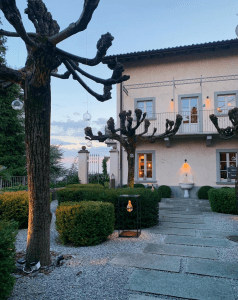 As the sun rose high in the sky, I was delighted to feel the warm rays bathed across my face and the fresh breeze. It was a definite change up from the weather in Metz, where it was perpetually grey and gloomy seven days a week. The city itself was beautiful. The town was lined with colorful houses of pastel orange, yellow, and red. The small little alleyways of the quaint Italian town seemed to emerge from stone, stacked upon each other creating small winding trails on the cliffs above the water, which shimmered a beautiful crystal-turquoise color as small private boats settled on the surface, rocking peacefully back and forth. Although the trees were still on their early spring phase, the leaf-less branches created intricate shapes and patterns that weaved higher in the sky, a natural masterpiece.
As the sun rose high in the sky, I was delighted to feel the warm rays bathed across my face and the fresh breeze. It was a definite change up from the weather in Metz, where it was perpetually grey and gloomy seven days a week. The city itself was beautiful. The town was lined with colorful houses of pastel orange, yellow, and red. The small little alleyways of the quaint Italian town seemed to emerge from stone, stacked upon each other creating small winding trails on the cliffs above the water, which shimmered a beautiful crystal-turquoise color as small private boats settled on the surface, rocking peacefully back and forth. Although the trees were still on their early spring phase, the leaf-less branches created intricate shapes and patterns that weaved higher in the sky, a natural masterpiece. 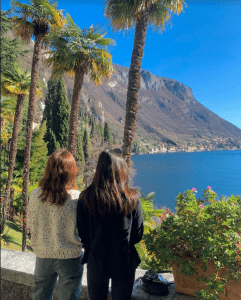
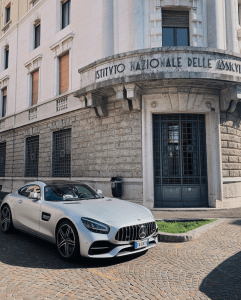 Finally, in Bellagio, we hopped off the ferry right on time to catch the glorious sunset, a ball of bright red that dipped below the horizon. As the sun disappeared, the cold started to set in, coupled with the strong winds that ripped our hair back and forth. As we took a look at the time, we would be right on time to catch the last bus back to the train station in Varenna, which would bring us back to the hotel. We stood in the dark corner of the bus station, waiting as the time ticked past its scheduled arrival. As the moon continued to rise higher into the sky, the bus finally showed up, only to be packed to the BRIM with passengers huddled like sardines on board. There was no room to spare. The driver, however, didn’t even stop; instead, we took one look at our shivering selves at the bus station, shrugged, and sped away. Our hearts sank. There was no way back. We stood there in silence for a minute pondering on what to do, but not too far from the dock, we saw a ferry pulling up to the station. It seemed to be running on schedule despite the strike. At once, we bolted on board only to find twenty other people trying to get to the same train station to catch the next train that would supposedly leave 5 minutes after the ferry arrives.
Finally, in Bellagio, we hopped off the ferry right on time to catch the glorious sunset, a ball of bright red that dipped below the horizon. As the sun disappeared, the cold started to set in, coupled with the strong winds that ripped our hair back and forth. As we took a look at the time, we would be right on time to catch the last bus back to the train station in Varenna, which would bring us back to the hotel. We stood in the dark corner of the bus station, waiting as the time ticked past its scheduled arrival. As the moon continued to rise higher into the sky, the bus finally showed up, only to be packed to the BRIM with passengers huddled like sardines on board. There was no room to spare. The driver, however, didn’t even stop; instead, we took one look at our shivering selves at the bus station, shrugged, and sped away. Our hearts sank. There was no way back. We stood there in silence for a minute pondering on what to do, but not too far from the dock, we saw a ferry pulling up to the station. It seemed to be running on schedule despite the strike. At once, we bolted on board only to find twenty other people trying to get to the same train station to catch the next train that would supposedly leave 5 minutes after the ferry arrives. 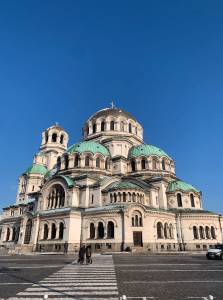 Bulgaria was a place with very rich history and deep national pride. Their cultural norms were rooted for centuries, passed down from family and family. And one of the first influences I noticed was the presence of Eastern Orthodox churches and mosques. Located in the heart of Sofia is St. Alexander’s Basilica. Its brutal architecture featured green and golden domes with large, arche
Bulgaria was a place with very rich history and deep national pride. Their cultural norms were rooted for centuries, passed down from family and family. And one of the first influences I noticed was the presence of Eastern Orthodox churches and mosques. Located in the heart of Sofia is St. Alexander’s Basilica. Its brutal architecture featured green and golden domes with large, arche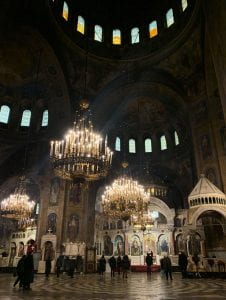 Inside, the atmosphere was even more unique. As we slowly entered, many Bulgarians would bow at the entrance and before the cross while performing the traditional Catholic crossbody hand gestures. The Basilica itself was very dimly lit with giant chandeliers that hung lowly from the ceiling. Paintings along the walls had darker undertones, featuring a more gothic approach than the fresh rococo style seen in Spain or Italy. There was a priest standing at the front of the sanctuary reading script in worship. His low, melodic yet monotone voice sent shivers down my spine. It was unlike anything I’ve seen or heard before.
Inside, the atmosphere was even more unique. As we slowly entered, many Bulgarians would bow at the entrance and before the cross while performing the traditional Catholic crossbody hand gestures. The Basilica itself was very dimly lit with giant chandeliers that hung lowly from the ceiling. Paintings along the walls had darker undertones, featuring a more gothic approach than the fresh rococo style seen in Spain or Italy. There was a priest standing at the front of the sanctuary reading script in worship. His low, melodic yet monotone voice sent shivers down my spine. It was unlike anything I’ve seen or heard before.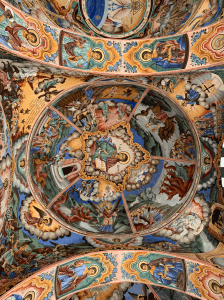
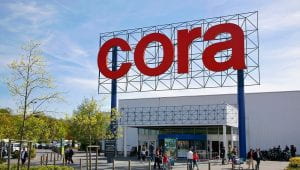 This is the biggest market in Metz and its definitely one you can’t miss. Basically a Walmart and Target combined into a Costco sized warehouse, Cora is the place to find anything you ever need. There are huge selections of housewares, clothing, pastries, meats, and drinks of all sorts. While prices are not much cheaper than those back in Atlanta, it depends on the meats, fruits, and veggies you end up buying. Tropical fruits, such as strawberries, grapes, and mangos are very expensive, almost 1.5 the price than we usually see at home. Meat cuts include parts from all parts of cows, pigs, and chicken, but the one thing you want to keep in mind when selecting cheaper meat is the date of consumption. Many times, the meats must be eaten within the next 1-3 days, so if you’re traveling on the weekend, it’s best to buy the groceries after you return. Overall, Cora scores a 10/10 on the scale. It has almost everything I ever needed and while it’s a 30-minute walk from Lafayette, with the metro pass, you can get there in a matter of minutes.
This is the biggest market in Metz and its definitely one you can’t miss. Basically a Walmart and Target combined into a Costco sized warehouse, Cora is the place to find anything you ever need. There are huge selections of housewares, clothing, pastries, meats, and drinks of all sorts. While prices are not much cheaper than those back in Atlanta, it depends on the meats, fruits, and veggies you end up buying. Tropical fruits, such as strawberries, grapes, and mangos are very expensive, almost 1.5 the price than we usually see at home. Meat cuts include parts from all parts of cows, pigs, and chicken, but the one thing you want to keep in mind when selecting cheaper meat is the date of consumption. Many times, the meats must be eaten within the next 1-3 days, so if you’re traveling on the weekend, it’s best to buy the groceries after you return. Overall, Cora scores a 10/10 on the scale. It has almost everything I ever needed and while it’s a 30-minute walk from Lafayette, with the metro pass, you can get there in a matter of minutes. 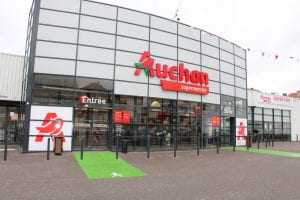 Auchan is a smaller chain supermarket that is closer to Lafayette than Cora. It sells mostly the same things and brands, but overall, Auchan has higher quality pastries and good budget food items. While the veggies selection is not as diverse, it specializes in lot of bio or organic produce that are slightly cheaper than the ones at Cora. From my experience, it is best to go to Auchan earlier in the day when things have been stocked up and when the bakeries just restock on their fresh breads. It scores brownie points for its convenient location and accessibility to Lafayette. Finally, most French groceries stores are highly plastic conscious, so you’ll have to bring your own bags!
Auchan is a smaller chain supermarket that is closer to Lafayette than Cora. It sells mostly the same things and brands, but overall, Auchan has higher quality pastries and good budget food items. While the veggies selection is not as diverse, it specializes in lot of bio or organic produce that are slightly cheaper than the ones at Cora. From my experience, it is best to go to Auchan earlier in the day when things have been stocked up and when the bakeries just restock on their fresh breads. It scores brownie points for its convenient location and accessibility to Lafayette. Finally, most French groceries stores are highly plastic conscious, so you’ll have to bring your own bags! 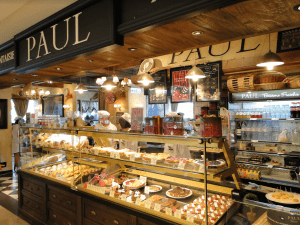 For new French pastry connoisseurs, Paul’s is the perfect place to start exploring. Located just 5 minutes away from GTL, Paul’s has a huge collection of coffees, breads, tarts, and ready-made food just for your convenience. For my first time at Paul’s, I tried their pain au chocolat, a classic French delicacy with chocolate folded into crispy, buttery goodness. Their tarts are amazing with fresh berries and a glaze that isn’t too sweet but also not too sour. Their freshly made baguettes in the morning are perfect for cheese and jam. Overall, the prices are comparable to those in Cora, so you might as well try out what they have and expand your horizons. There are also many tables set up inside for you to get your work done, in an ambient, cozy environment with your favorite pastries. While taste is good, the waiter experience was slightly awkward when we first visited there. If you do not know French, you might want to touch up on some of your basic French phrases before heading over.
For new French pastry connoisseurs, Paul’s is the perfect place to start exploring. Located just 5 minutes away from GTL, Paul’s has a huge collection of coffees, breads, tarts, and ready-made food just for your convenience. For my first time at Paul’s, I tried their pain au chocolat, a classic French delicacy with chocolate folded into crispy, buttery goodness. Their tarts are amazing with fresh berries and a glaze that isn’t too sweet but also not too sour. Their freshly made baguettes in the morning are perfect for cheese and jam. Overall, the prices are comparable to those in Cora, so you might as well try out what they have and expand your horizons. There are also many tables set up inside for you to get your work done, in an ambient, cozy environment with your favorite pastries. While taste is good, the waiter experience was slightly awkward when we first visited there. If you do not know French, you might want to touch up on some of your basic French phrases before heading over. 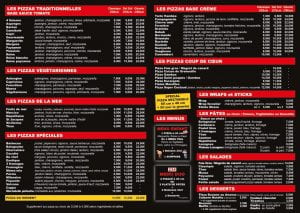 Funny enough, Mamma Mia
Funny enough, Mamma Mia 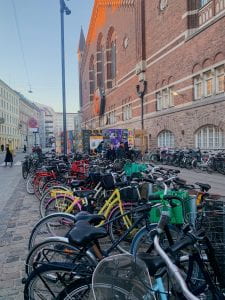 Bikes:
Bikes: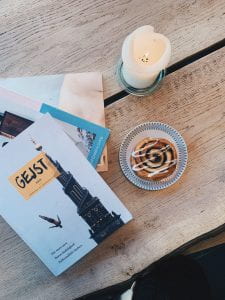
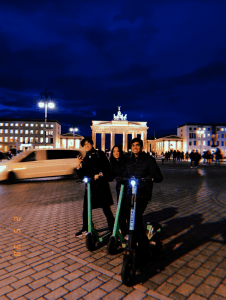 block.
block. 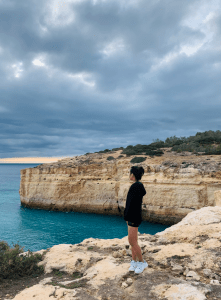 For the nature enthusiasts, hiking is always a cheap option that you can tailor to your experiences and preferences. Many big cities in Europe are located next to mountainous regions or along the coast. For example, if you travel to Marseille in France, you can scale the Calanques for a whole day without spending a single cent. In many of the port cities, you can find rocky outcrops to bask in the sunlight or take a stroll along the beach. If you’re in Italy or Portugal, there are many lakes such as Lake Como or the Benagil Caves that you can spend your afternoon exploring. While extra activities such as mountain biking or sea kayaking may cost 10-30 euros, the views are spectacular and worth the cost.
For the nature enthusiasts, hiking is always a cheap option that you can tailor to your experiences and preferences. Many big cities in Europe are located next to mountainous regions or along the coast. For example, if you travel to Marseille in France, you can scale the Calanques for a whole day without spending a single cent. In many of the port cities, you can find rocky outcrops to bask in the sunlight or take a stroll along the beach. If you’re in Italy or Portugal, there are many lakes such as Lake Como or the Benagil Caves that you can spend your afternoon exploring. While extra activities such as mountain biking or sea kayaking may cost 10-30 euros, the views are spectacular and worth the cost. 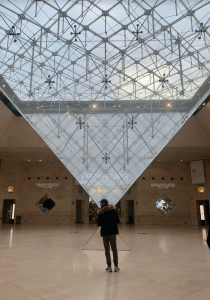 As a student, you’re in luck. Many museums such as the Prado in Madrid are free for students on certain weekends. If they are not free, exhibition tickets are often sold at a discounted rate if you have your ISIC card on you. These museums often hold gems of modern, historical art, and they can eat up a whole day of activities if you’re interested. Not only are these museums specific to the region, they also have different exhibitions every month.
As a student, you’re in luck. Many museums such as the Prado in Madrid are free for students on certain weekends. If they are not free, exhibition tickets are often sold at a discounted rate if you have your ISIC card on you. These museums often hold gems of modern, historical art, and they can eat up a whole day of activities if you’re interested. Not only are these museums specific to the region, they also have different exhibitions every month. 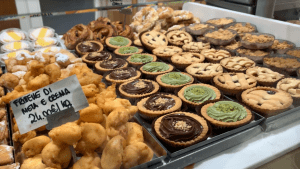 For the foodies, a cheap way to try local foods is to go bakery hopping. Many small goodies cost one or two euros and are pretty filling. They also represent the local cuisine with each baked good. For example, in Faro, Portugal, we tried Portuguese egg tarts that are a euro and custard sponge cakes, which the locals were crazed about. In Italy, we also had cheap cannolis and pistachio buns for under a euro. In Como, they sold pastries by the bag, and we lived off them for only 7 euros throughout the entire day.
For the foodies, a cheap way to try local foods is to go bakery hopping. Many small goodies cost one or two euros and are pretty filling. They also represent the local cuisine with each baked good. For example, in Faro, Portugal, we tried Portuguese egg tarts that are a euro and custard sponge cakes, which the locals were crazed about. In Italy, we also had cheap cannolis and pistachio buns for under a euro. In Como, they sold pastries by the bag, and we lived off them for only 7 euros throughout the entire day. 
